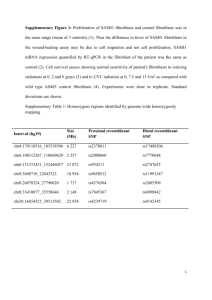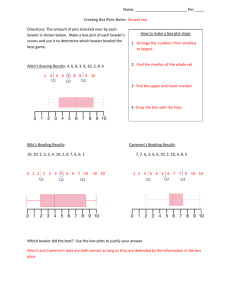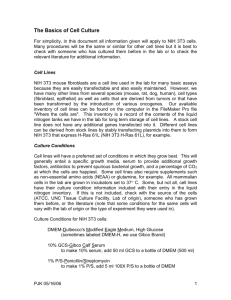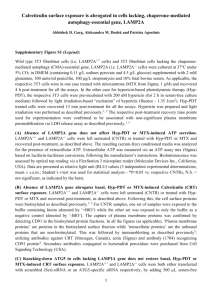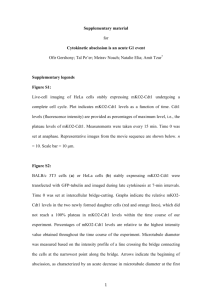Supplementary Data
advertisement
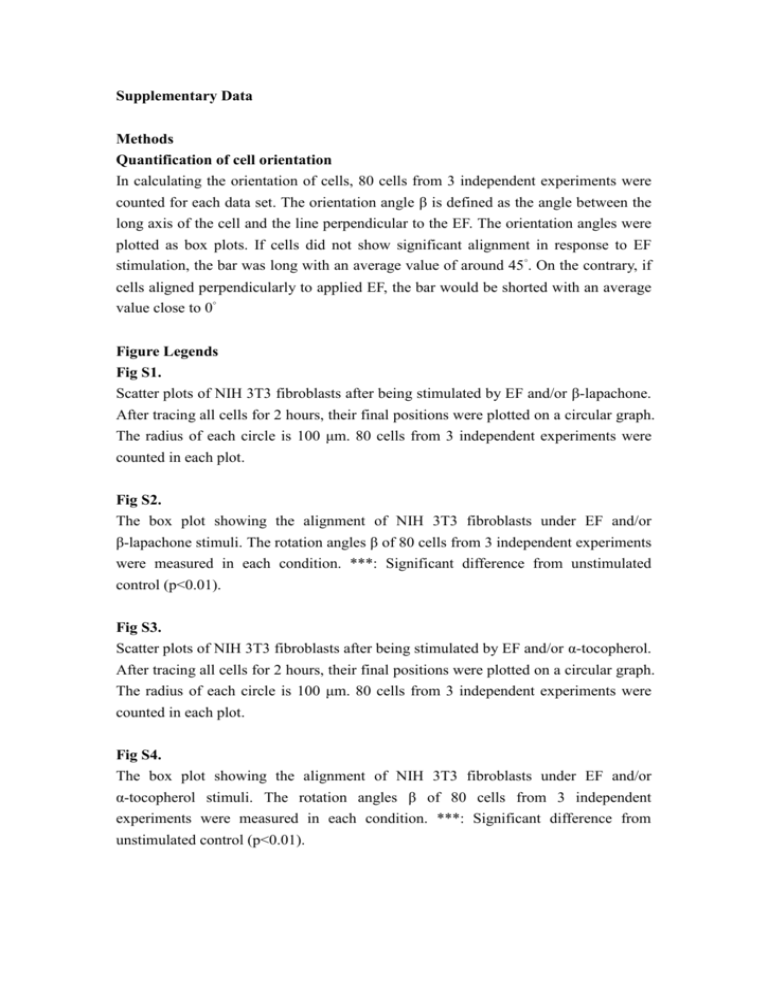
Supplementary Data Methods Quantification of cell orientation In calculating the orientation of cells, 80 cells from 3 independent experiments were counted for each data set. The orientation angle β is defined as the angle between the long axis of the cell and the line perpendicular to the EF. The orientation angles were plotted as box plots. If cells did not show significant alignment in response to EF stimulation, the bar was long with an average value of around 45°. On the contrary, if cells aligned perpendicularly to applied EF, the bar would be shorted with an average value close to 0° Figure Legends Fig S1. Scatter plots of NIH 3T3 fibroblasts after being stimulated by EF and/or β-lapachone. After tracing all cells for 2 hours, their final positions were plotted on a circular graph. The radius of each circle is 100 μm. 80 cells from 3 independent experiments were counted in each plot. Fig S2. The box plot showing the alignment of NIH 3T3 fibroblasts under EF and/or β-lapachone stimuli. The rotation angles β of 80 cells from 3 independent experiments were measured in each condition. ***: Significant difference from unstimulated control (p<0.01). Fig S3. Scatter plots of NIH 3T3 fibroblasts after being stimulated by EF and/or α-tocopherol. After tracing all cells for 2 hours, their final positions were plotted on a circular graph. The radius of each circle is 100 μm. 80 cells from 3 independent experiments were counted in each plot. Fig S4. The box plot showing the alignment of NIH 3T3 fibroblasts under EF and/or α-tocopherol stimuli. The rotation angles β of 80 cells from 3 independent experiments were measured in each condition. ***: Significant difference from unstimulated control (p<0.01).
